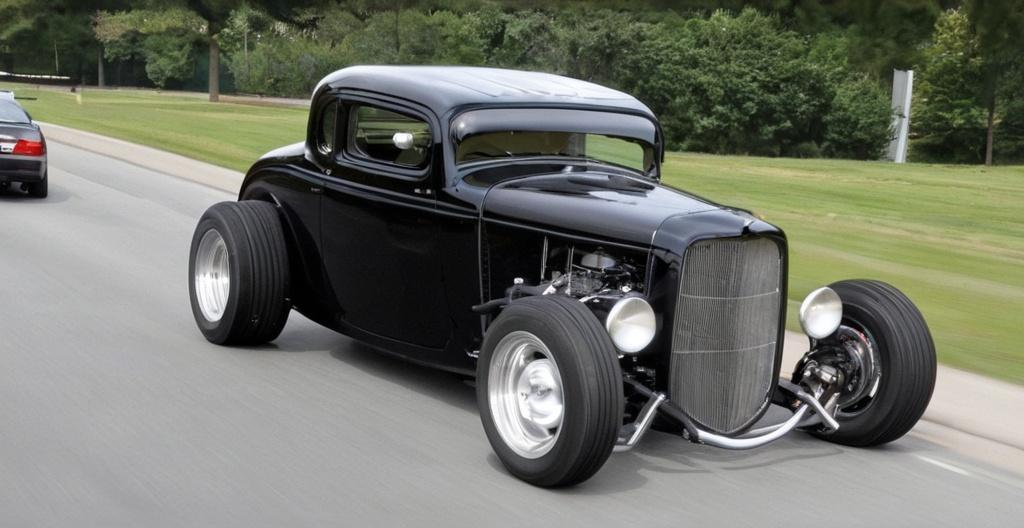Key Take Aways About Soundproofing Your Street Rod Interior
- Soundproofing enhances comfort and reduces driver fatigue in street rods.
- Key materials include Mass Loaded Vinyl, Closed Cell Foam, and Insulation Mats.
- Focus on soundproofing areas like the firewall, floor, and doors for best results.
- Installation requires surface prep and careful material placement.
- Cost varies but offers a quieter, more enjoyable ride, making it a worthwhile investment.
- Soundproofing complements other customizations, enhancing the overall driving experience.

Why Soundproof Your Street Rod?
You know the roar of a powerful engine, it’s music to your ears. But sometimes that music gets a little too loud, especially when cruising down the highway or sitting in traffic. It’s the kind of noise that can turn a pleasant drive into a headache. That’s where soundproofing steps up. It’s not just for libraries and recording studios; it’s a game-changer for anyone serious about their ride.
Soundproofing is about creating a comfortable environment inside your street rod, where you can hold a conversation or enjoy your favorite tunes without cranking the volume to eleven. You might think it’s purely about luxury, but it can also help reduce driver fatigue, making your journey safer and more enjoyable.
The Basics of Soundproofing
Soundproofing is simple, or at least the concept is: keep the sound where you want it and out from where you don’t. It’s like a bouncer for your ride’s interior. It starts with adding materials designed to absorb or block noise—think things like mats, foams and sprays that line the interior to dampen engine noise, road noise and vibrations.
There are a few heavy hitters in this field, each playing a part in keeping your cabin as peaceful as a Sunday morning. **Mass Loaded Vinyl (MLV)** is a favorite. It’s like a blanket of peace for your car, dense and flexible. Then there’s **Closed Cell Foam**, which is lightweight and doesn’t soak up moisture—handy if your car has a history of leaks. And don’t forget about the good old **Insulation Mats**, which can be laid down like carpet underlayment and are pretty effective at cutting down on the decibels.
Where to Focus Your Efforts
Let’s not sugarcoat it—soundproofing a street rod can be a bit of a project. You’ll want to get strategic about where you invest your time and resources. Start with the biggest noise makers: the engine and the road.
**Firewall**: It’s supposed to shield the cabin from heat and noise. But, sometimes it needs a little help. Adding soundproofing material here can significantly reduce the engine noise.
**Floor**: Road noise creeps up from the floor, so laying down sound-deadening mats here can make a big difference. It’s like giving your car a pair of noise-cancelling shoes.
**Doors**: They let in a surprising amount of noise. Sealing gaps and using soundproofing materials can make your doors the Fort Knox of the streets.
Installation Tips
Installing soundproofing materials isn’t rocket science, but it does require a little patience and elbow grease. First things first, prep your surfaces. Clean off dirt and grease so your materials stick properly. Measure twice, cut once—this age-old advice holds true here. Get your pieces cut to fit before you start sticking things down. And don’t forget to wear gloves because some materials like MLV can be a bit rough on the hands.
When placing mats, start from the center and work your way out, pressing down firmly to ensure a good bond. Overlap edges to ensure full coverage, like making a seamless quilt of silence.
Cost vs. Benefit
Soundproofing isn’t the cheapest thing on the menu, but you’ll likely find it worth every penny when you’re cruising comfortably at 70 mph without your eardrums throbbing like a bass drum. Materials run the gamut in terms of price, from budget-friendly options to top-end products. Expect to spend anywhere from a few hundred bucks to over a grand, depending on your ride’s size and the noise levels you’re dealing with.
There’s a certain satisfaction in having a street rod that not only looks good but sounds good—or rather doesn’t sound at all. Plus, some folks claim a quieter interior makes your car feel faster and more luxurious. Whether that’s science or just good storytelling, it’s hard to say. But the result is undeniable: a nicer ride for you and your passengers.
Pulling It All Together
Soundproofing your street rod is like leveling up your ride experience. It’s the cherry on top of all those customizations under the hood and the bodywork that makes heads turn. Sure, it takes a bit of effort, but in the end, it’s about making your street rod a place you’d happily spend hours. So, grab those tools, roll up your sleeves, and get ready to turn your ride into a haven of quiet amidst the road’s chaos.
